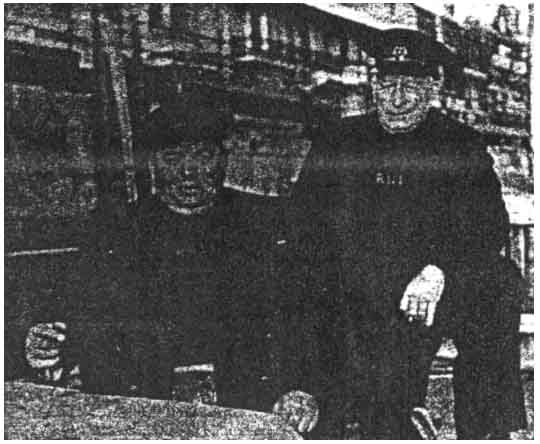We received an email from Western Australia pointing out
that we had not mentioned that the skipper of the New Britannic at the time of
the Dunkirk evacuation was Walter Read, and also that his son, Joe was crew at
the time and indeed he was the youngest person to take part in the evacuation at
15 years of age.
After some research we found a newspaper cutting, the text
is shown below
FINE DAY FOR A SAIL
by
Walter Read
as told to Bill
Evans
I WOKE up in a hammock in the middle of a funfair
wondering where I was that lovely May morning. Nearby, my 15-year-old son Joe
and other Ramsgate boatmen were preparing for a normal day's work.
But it was a bit of a mystery why we had suddenly been told, the day before, to
"kip" at the funfair, instead of going home as usual.
And I wondered even more when an Admiralty messenger arrived, as we were
unloading mail from a foreign ship, and warned us: "Stand by for a special job
after lunch. Have your boat at the east pier."
We were told to lay in extra fuel, although we were going to be towed out.
There was a tug out front with a Naval Commander on board,
and four or five drifters, each of them making ready to tow a boat like ours.
"Take as much drinking water as you can," someone said.
Another puzzle. The Navy boys brought us stacks of tinned corned beef, biscuits
and cocoa, so I knew now we must be going on a long trip. But no one told us
where.
The next thing they produced properly foxed us ... a
batch of ladders.
Along with the mystery was the suspense. It was now four
hours since the "stand by" order, and I sent Joe briefly back to his mother,
telling her that we might not be home that night.
Then, at 4.30, we got the signal, and the "mystery" trip
started. The tug led the way, the drifters left the harbour with our 23-ton
boat, and others like her, in their wake.
The tug led us steadily on, until it grew dark, and the
Kent coast had vanished.
Finally, well past midnight, we anchored near a destroyer.
In the distance there were heavy rumblings. Yet our "patch" of sea seemed
still and quiet and, a bit tired, we wondered what the next day would bring.
It was not until dawn broke that we had an inkling of the
mission we were on. For, on the beach, barely 150 yards away, there were
thousands of khaki-clad soldiers. They were waiting, helpless, starving,
bewildered, for our little convoy to take them home.
My boat, the New Brittanic is Licensed to carry 120
passengers. But the tug sent
out a row-boat, we threw those ladders across; and, in half-an-hour or so, about
200 tired, hungry men made us look like a floating sardine can.
We gave them all the food we had, then transferred
them to the destroyer.
Again and again, we ferried survivors to the waiting
warship, and we saw screaming bombers dive so low you could pick out their
swastikas.
Our rescue operation lasted two long days.
Then, in the early hours of Friday, May 31, 1940, we
rounded the Goodwins and anchored back in Ramsgate.
We were home safe. And. thanks to our boat, so were nearly
3,000 soldiers.
PHOTO, Twenty-five years after
. . . Walter Read and ]oe
(Ieft)
on
the New
Brittanic
